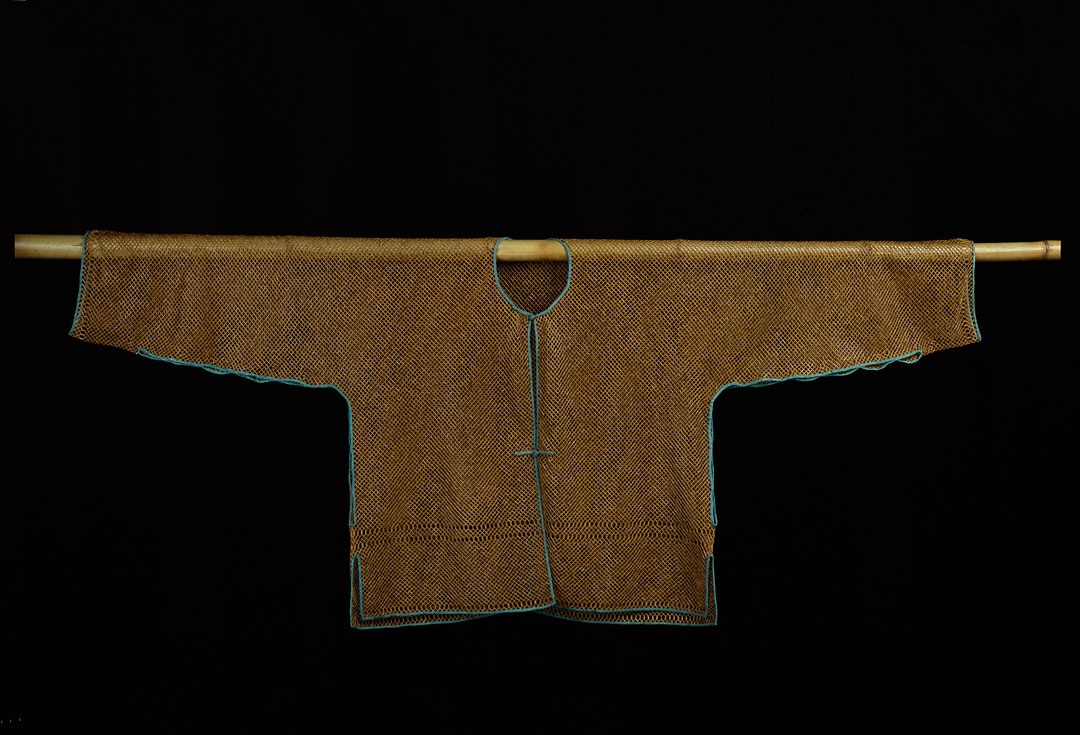Object of the Week: Bamboo Netting Jacket
One of the many “eco-friendly” fashion trends that graced the United States during the aughts was bamboo clothing. You could find it in just about every form: bamboo shirts, hoodies, socks, athletic wear—you name it. However, this woody grass has long been used in a variety of ways due to its wide-ranging properties, and bamboo undergarments, such as this netting jacket, were prominent in China as early as the Ming dynasty (1368-1644). Modern bamboo textiles cannot hold a candle to them.
Made from cut sections of fine bamboo, this garment was constructed by sewing together hollow bamboo segments to create a woven mesh-like textile. The result is a simple but functional fabric that allows air to flow, keeping its wearer cool and dry (especially in the hot and humid climate of southern China). Further, this additional layer would protect outer garments, often made out of more expensive materials, from being stained and ruined. Despite the fact that this netting jacket would not be seen, its maker possessed an exquisite attention to detail and its construction; together, the mesh design, blue trim, and fasteners all enhance the elegant utility of the piece.
During the late 1800s, bamboo was already beginning to be mixed into other fibers to create alternative fabric blends. However, it was not until the 1990s that textile manufacturers realized bamboo could be substituted in producing rayon, a man-made fiber created from wood pulp and processed cellulose. As Syl Tang writes in Disrobed: How Clothing Predicts Economic Cycles, Saves Lives, and Determines the Future, rayon “was revolutionary for clothing makers. It felt like silk, yet was much cheaper to produce and did not insulate heat, which made the fabric perfect for hot climates.”[1] Add to this the fact that bamboo is an environmental powerhouse—it grows densely and quickly, regenerates after being cut, mitigates greenhouse gases—it is no wonder that bamboo was packaged as a better, safer, and greener option to other textile blends.
For the most part, many clothing companies touting the environmental and health benefits of bamboo during the 2000s were really just selling rayon (or viscose). Taking advantage of the green movement and the devotion of its consumers, such companies were able to get away with perverting a natural material that, as we see in this jacket, needs nothing else.
– Elisabeth Smith, Collections Coordinator
